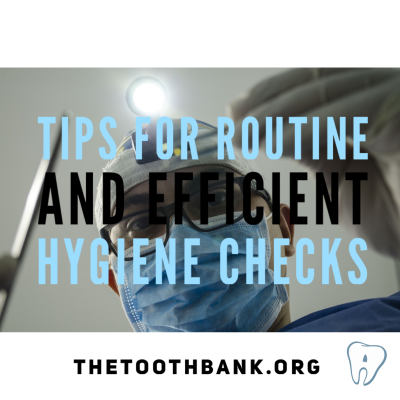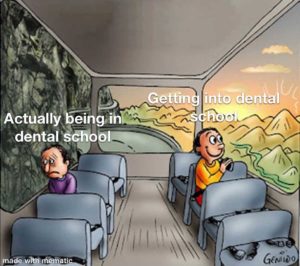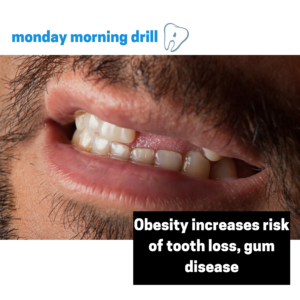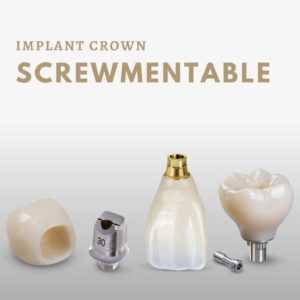Hygiene checks (a.k.a.: periodic oral evaluations) are one of the most routine and guaranteed parts of your day as a general private practice dentist. They can take anywhere from 5-10 minutes and are an important part of a practice. Yet, if you’re like me, you probably never had a “hygiene check” experience at school; instead, treatment planning in dental school was a whole different experience. Gone are the days of personally spending an hour gathering probing depths, taking radiographs, taking alginate impressions for diagnostic casts (to be poured up immediately of course) and spending hours consulting with different faculty and departments. In private practice, you’re the “expert” (granted referrals are always an option if needed), and patients want your thoughts quickly and efficiently. With that said, it is important to have a set hygiene check routine that you can do exactly the same way every time which will help you to avoid missing any part of the exam. Here is my routine.
- Introduce myself. Have some small talk with the patient (start with a topic not related to dentistry if possible). Build some rapport.
- Ask the patient something like “is there anything tooth-related that is concerning you today?”. This gives you a heads-up on what’s important to the patient and what to spend more time on.
- Extra oral exam:
-
-
- Tell my patient I am going to do a head/neck exam. I always start by palpating lymph nodes under the mandible area, palpating thyroid, then neck lymph nodes.
- Next, I have the patient open and close, feel for any TMJ discrepancies, then palpate Masseter and Temporalis muscles and ask if they have any tenderness in the area.
-
- Intraoral exam:
-
-
- I palpate the cheek areas by rolling with my index finger on the outside of the cheek and thumb on the inside. Run your finger along the whole vestibule bilaterally and feel for any discrepancies. Also pull the cheeks back and take a good look. I also use this as a chance to ask my patient to bite down so I can get an idea of their occlusion (class I, II, III)
- Tongue check: move tongue side to side and observe. Tongue up towards the roof of the mouth and palpate the floor of the mouth and examine.
- Palate check: look at both hard and soft palate.
-
- Radiographs and FINALLY look at the teeth
-
- I try to take a quick minute (literally one minute or less some busy days) to look at radiographs in the back office before I go do a check so I can make mental notes on areas to check more closely. That also helps me to decide on treatment options quicker in the operatory.
- Look at radiographs again in the op as you are doing your exam. I go from UR-UL-LL-LR during my exam, and have the hygienist click through the X-rays as I’m clinically checking the tooth.
- Run explorer and mirror interproximal, buccal, lingual and occlusal/incisal.
- Air syringe is your best friend in detecting caries, bad margins or other areas of interest during your exam.
- Intraoral pictures:
- I like to take pictures of the teeth I am treatment planning so that I can more effectively show my patients why I am recommending treatment. I think patients like to see it, and it really helps them to build trust in you as their provider.
- My finale: “what questions do you have for me?” And then I thank them for coming in today.
- This gives your patient an open invitation to ask you about your treatment plans and make sure they truly understood the why and how.
BONUS TIP: If you have a more complicated case or want more time to decide on a treatment, don’t rush an answer. Most patients will appreciate you taking the time to think through their case. Take pictures, make a physical note and post it on your desk so you can review the case at the end of the day and call the patient with your thoughts.
This is just my routine—As long as you don’t miss any of the important steps in oral cancer screening and tooth diagnosis, the order should not matter. Ultimately you will find the routine that best suits you!

General Dentist. Author at The Tooth Bank and create content for our social media with a focus on providing information for new dentists..




